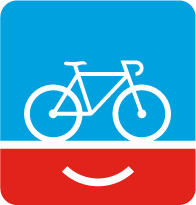Protected Green Lanes Nearly Double Nationwide in 2012
By: PeopleForBikes Staff
Total to Double Again in 2013 According to New Inventory
The simple bike lane, the stripe of white paint that creates a space for riding on the road, is getting a makeover in cities across the U.S. The improved space, called a green lane, adds physical separation between moving cars and bikes, such as a curb, parked cars or plastic posts. A new inventory released today by the Green Lane Project shows the number of these protected green lanes on the ground nationwide has nearly doubled in 2012.
?Increasingly, U.S. cities want to make riding a bike a practical and comfortable way to get around for short trips,? said Martha Roskowski, director of the Green Lane Project. ?The growing popularity of urban living, the decline in driving by young people and a desire for more attractive public places are inspiring cash-strapped cities to focus on retrofitting existing streets to make them work better for all users.?
Although these protected on-street bike facilities have long been a staple in Europe, they?ve only recently gained traction in the U.S. Between 1874 and 2011, only 62 were built nationwide. The new inventory shows that this number will nearly double to 102 protected green lanes on the ground in 32 U.S. cities by the end of 2012. Building on this momentum, the U.S. is projected to add another 100 green lanes in 2013.
Despite the fact that traditional bike lanes have long been a cornerstone for city planners, they don’t always work well on busy streets. For many riders, the stripe of paint is not enough to make riding a bike for every day travel an attractive and comfortable option.
Sixty percent of Americans say they would bike more often if they had a safe place, like a green lane, to ride. This point was validated by a recent study in Washington D.C. that revealed bicycling increased 200% on Pennsylvania Avenue after green lanes were installed.
The numbers make it very clear that if we change how the streets work, we change how people travel,? continued Roskowski. Building safe, appealing places to ride is the number one way we can encourage more people to hop on a bike. You can’t market people into feeling safe; it starts on the ground with the proper infrastructure.?
Up until 2007, according to today’s Green Lane Project inventory, only a handful of protected green lanes existed in the U.S. New York City changed the equation when Mayor Michael Bloomberg and his transportation commissioner, Janette Sadik- Khan, began transforming streets, adding protected bike lanes and public plazas. They were inspired by Danish architect Jan Gehl, known for his visionary work to enhance the quality of urban life by reorienting city design toward those on foot and on bike.
Another milestone was the release of the 2011 Urban Bikeway Design Guide, created by the National Association of City Transportation Officials, which provided the basic toolkit showing cities how to combine existing standards and design elements to build green lanes.
The Green Lane Project, launched in early 2012 by the Bikes Belong Foundation, is working with six leading cities to help them put green lanes on the ground. Over 80 percent of the new protected green lanes built in 2012 are in the Green Lane Project’s focus cities of Austin, Texas, Chicago, Memphis, Portland, Ore., San Francisco and Washington D.C., along with the Green Lane Project’s senior advisor and partner city New York City.
The inventory of protected green lanes is available for download at www.greenlaneproject.org/inventory-of-protected-green-lanes. The full inventory includes additional details about the existing and future protected green lanes, such as the type of separation used between cars and bicycles, and the routes that are two-way versus one-way.

